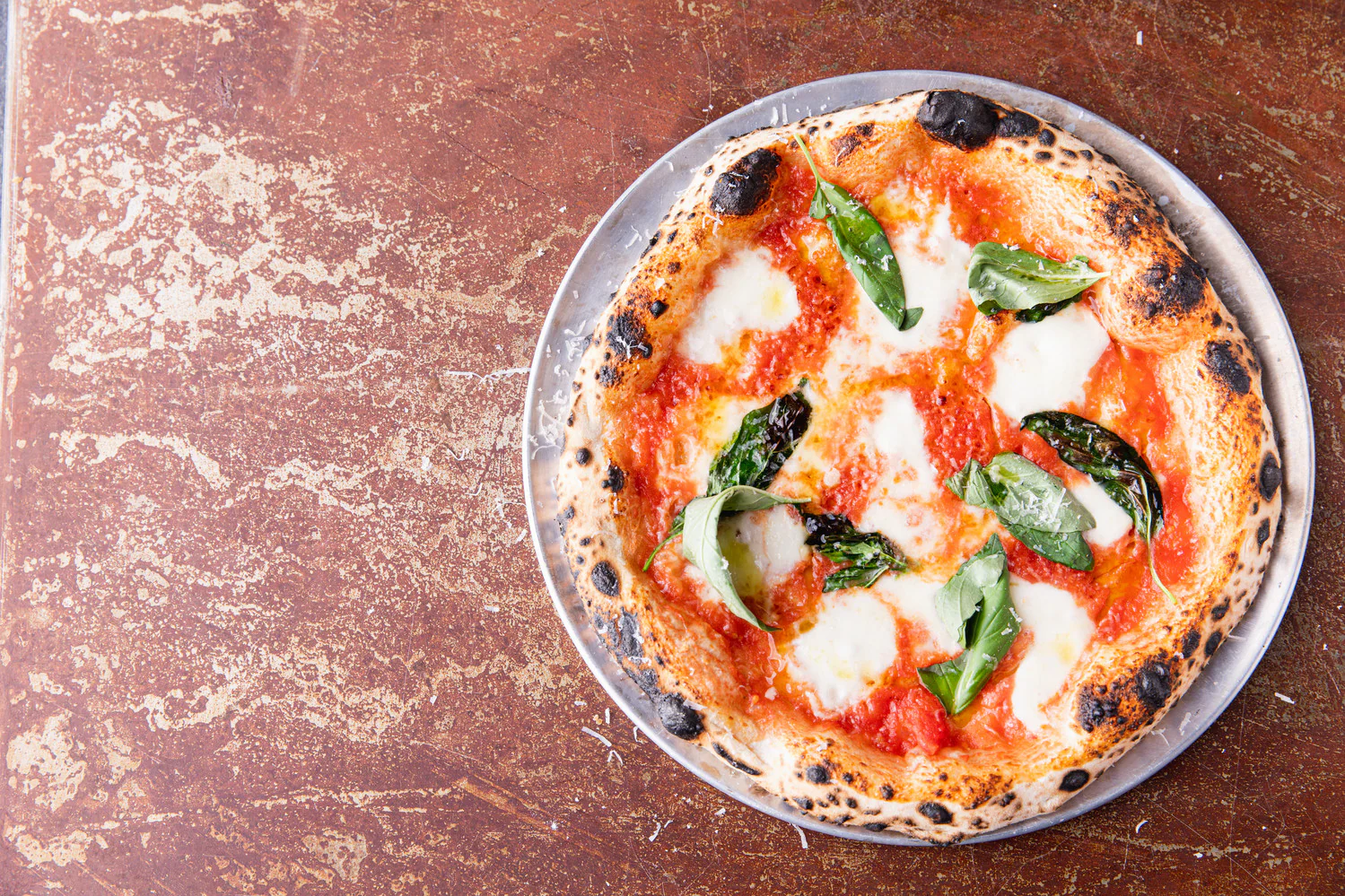Neapolitan pizza is an age-old tradition and simple culinary creation, made from simple dough, tomatoes, mozzarella cheese and basil leaves.
Pizzas baked for no longer than 90 seconds in a wood fire oven that reaches 800F are transformed into works of art by this process.
Origins
Pizza of Naples has an expansive and colorful history dating back to the 1700s when its first rendition emerged with tomatoes (pomo di oro) adorning it and being baked primarily in wood-fired ovens. It may have originated due to Europe’s collapsed feudalism system where serfs lost bondage rights with medieval manor lords and needed other means of earning an income in order to survive.
Pizza first emerged in Naples street corners as an affordable food option sold for one Soldo coin and was popular among the poorer neighborhoods due to its affordable cost. Pizza later became part of Neapolitan cuisine when King Umberto I and Queen Margherita of Savoy visited Naples in 1889, when a baker named Raffaele Esposito created a pie to honor them featuring red tomatoes, mozzarella cheese and basil as their flag colors – something Raffaele Esposito honored by creating his pizza bearing those colours on his masterpiece a year later!
Authentic pizza requires fresh ingredients prepared using traditional methods and then cooked for 60-90 seconds in an igloo-shaped wood-fired oven that reaches temperatures of 800 F. This type of preparation elevates pizza making into an art that honors its history and tradition.
Ingredients
Ingredients are key when it comes to creating delicious pizza, and Neapolitan pizzas are highly regulated for quality and topping standards by Associazione Verace Pizza Napoletana (AVPN).
Basic pizza dough contains flour, water, yeast, and salt; however there are numerous variations with specific techniques used for mixing and kneading to produce different textures and flavors. Neapolitan pizza typically uses San Marzano or Pomodorino del Piennolo tomatoes grown near Mount Vesuvius on fertile volcanic soil; mozzarella di bufala campana cheese made with fresh water buffalo milk; basil leaves for garnish; extra virgin olive oil as toppings.
Neapolitan pizza began its modern transformation during the 1700s when dressing it with tomatoes and baking it in wood-fired ovens became culinary norms. This may have coincided with feudalism and manorialism being dismantled across Europe due to Napoleonic Wars, allowing people to work for themselves instead.
Preparation
Neapolitan pizzas are handcrafted using high-quality ingredients such as type 0 or 00 flour, San Marzano tomatoes and Mozzarella di Bufala Campana cheese from Italy. Dough is hand-kneaded or mixed by low speed mixer until elastic; salt must not come into direct contact with yeast as its addition must occur gradually in order to prevent contamination of this important microbiological process.
Pizza is typically enjoyed hot. You can top your pie with any variety of ingredients such as basil, mozzarella and extra virgin olive oil; alternatively it could include arugula or artichokes.
In 2017, UNESCO honored the art of creating authentic Neapolitan pizza as an intangible cultural heritage of humanity. This style’s strict preparation, cooking style, and temperature make it different than other varieties. There are currently around one hundred pizzerias around Italy and worldwide offering this classic dish; those aspiring to certification must meet AVPN standards in order to serve authentic Neapolitan pizza.
Cooking
Pizza has long been part of Italian culinary tradition. In 1984, the Associazione Verace Pizza Napoletana was formed to preserve this ancient form. This organization certifies restaurants who adhere to stringent guidelines regarding dough fermentation times (minimum 24-hour fermentation period for pizza dough production) and ingredients used (San Marzano tomatoes or fior di latte or mozzarella di bufala Campania mozzarella are examples of high-quality ingredients used).
Pizzas are then baked at an ideal temperature of 800 F in stone igloo-shaped wood-fire ovens reminiscent of Pompeii. This intense heat cooks it within 60-90 seconds for a bubbly crust with deliciously smoky flavors; then these pizzas are topped clockwise with uncooked pureed San Marzano tomatoes, mozzarella (either fior di latte or mozzarella di Bufala Campania), drizzles of extra virgin olive oil, and fresh basil leaves for garnish.








